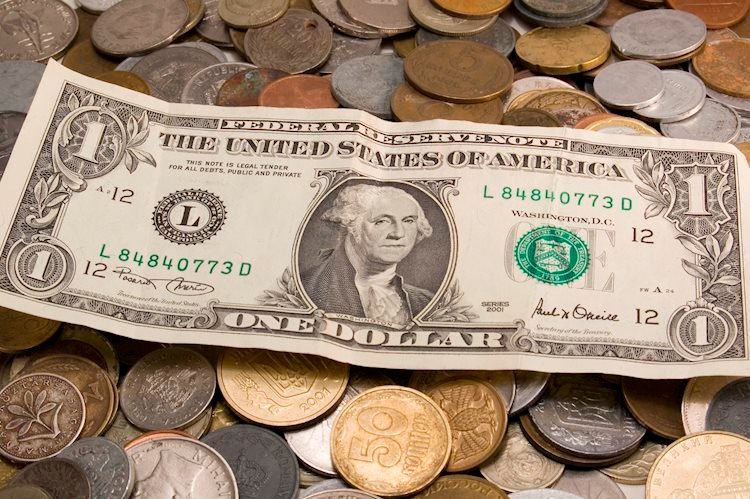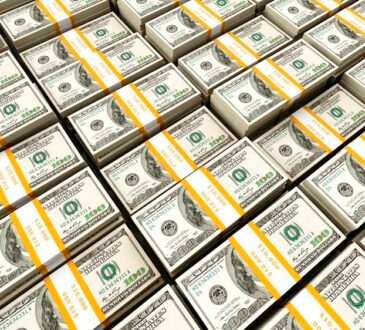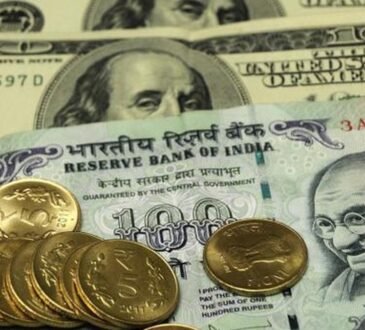- The US Dollar depreciates as Treasury yields lose ground amid US economic instability.
- CME FedWatch tool indicates a 100% probability of a 25-basis point Fed rate cut in September.
- Weekly US Initial Jobless Claims fell to 233K, against the expected 240K and 250K prior.
The US Dollar Index (DXY), which tracks the value of the US Dollar (USD) against six major currencies, edging lower to near 103.20. The decline in US Treasury yields is exerting additional pressure on the Greenback, with yields standing at 4.01% and 3.97%, respectively, at the time of writing.
The US Dollar faces challenges amid increasing expectations that the Federal Reserve (Fed) may implement a rate cut in September. Traders evaluate mixed signals from the US economy, trying to determine whether it will experience a soft landing or slip into a recession. The CME FedWatch tool indicates that markets are now fully anticipating a 25-basis point interest rate cut by the Fed in September.
On Thursday, Kansas City Fed President Jeffrey Schmid stated that reducing monetary policy could be “appropriate” if inflation remains low. Schmid noted that the current Fed policy is “not that restrictive” and that while the Fed is close to its 2% inflation goal, it has not yet fully achieved it, per Reuters.
On the data side, US Initial Jobless Claims dropped to 233,000 for the week ending August 2, coming in under the market expectation of 240,000. This decline follows an upwardly revised figure of 250,000 for the previous week, which was the highest in a year.
The downside of the Greenback could be limited due to rising safe-haven flows amid heightened geopolitical tensions in the Middle East. Israeli forces intensified their airstrikes on the Gaza Strip, resulting in at least 40 casualties on Thursday, according to Palestinian medics. This escalation has further intensified the conflict between Israel and Hamas-led militants, as Israel prepares for the possibility of a broader regional conflict following the killing of senior members of militant groups Hamas and Hezbollah.
US Dollar FAQs
The US Dollar (USD) is the official currency of the United States of America, and the ‘de facto’ currency of a significant number of other countries where it is found in circulation alongside local notes. It is the most heavily traded currency in the world, accounting for over 88% of all global foreign exchange turnover, or an average of $6.6 trillion in transactions per day, according to data from 2022. Following the second world war, the USD took over from the British Pound as the world’s reserve currency. For most of its history, the US Dollar was backed by Gold, until the Bretton Woods Agreement in 1971 when the Gold Standard went away.
The most important single factor impacting on the value of the US Dollar is monetary policy, which is shaped by the Federal Reserve (Fed). The Fed has two mandates: to achieve price stability (control inflation) and foster full employment. Its primary tool to achieve these two goals is by adjusting interest rates. When prices are rising too quickly and inflation is above the Fed’s 2% target, the Fed will raise rates, which helps the USD value. When inflation falls below 2% or the Unemployment Rate is too high, the Fed may lower interest rates, which weighs on the Greenback.
In extreme situations, the Federal Reserve can also print more Dollars and enact quantitative easing (QE). QE is the process by which the Fed substantially increases the flow of credit in a stuck financial system. It is a non-standard policy measure used when credit has dried up because banks will not lend to each other (out of the fear of counterparty default). It is a last resort when simply lowering interest rates is unlikely to achieve the necessary result. It was the Fed’s weapon of choice to combat the credit crunch that occurred during the Great Financial Crisis in 2008. It involves the Fed printing more Dollars and using them to buy US government bonds predominantly from financial institutions. QE usually leads to a weaker US Dollar.
Quantitative tightening (QT) is the reverse process whereby the Federal Reserve stops buying bonds from financial institutions and does not reinvest the principal from the bonds it holds maturing in new purchases. It is usually positive for the US Dollar.





